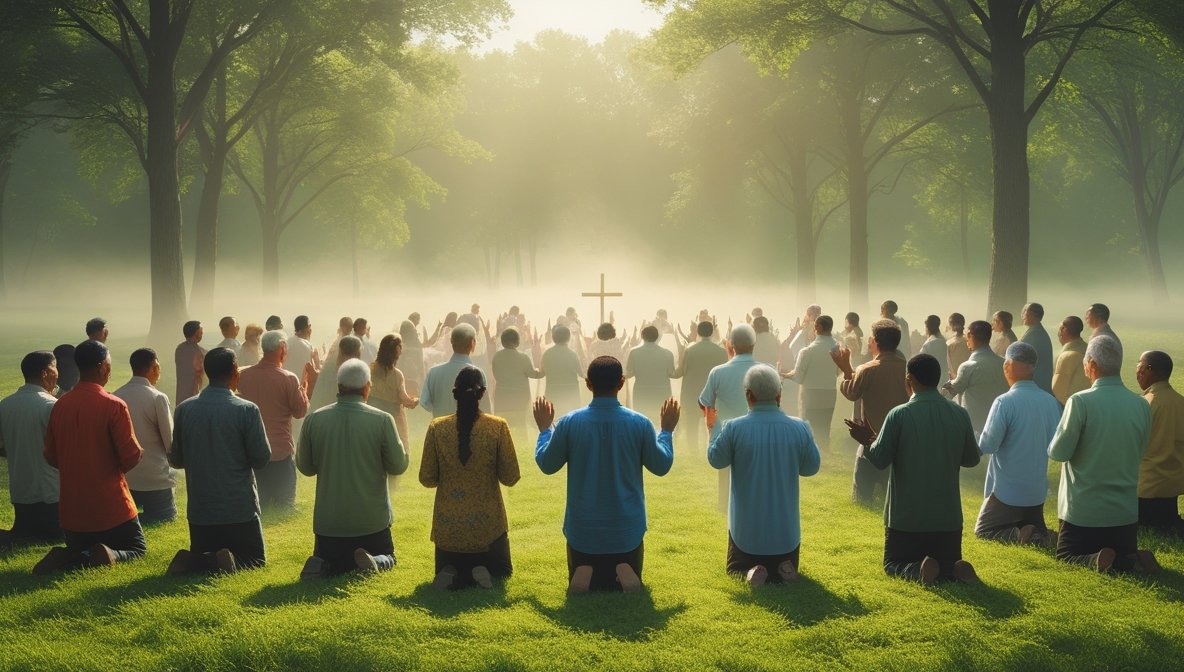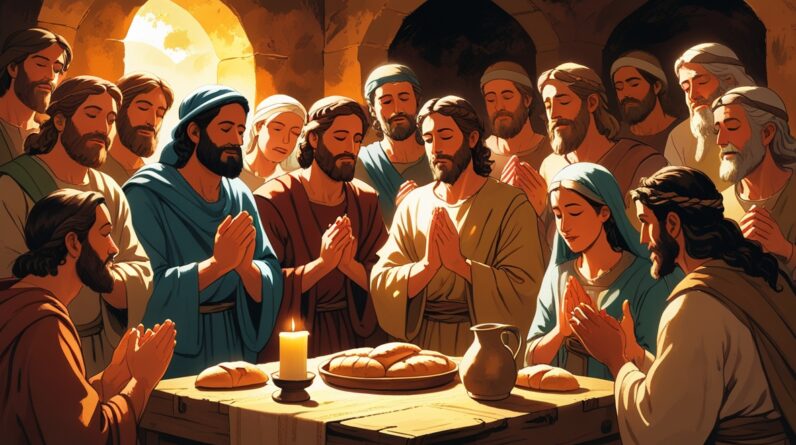Why The Church Is More Than Just A Building
You probably grew up thinking of the church as a place you go on Sundays — a specific roof, pews, stained glass, and a clock that tells you when it’s time to stand. That image is comforting and familiar, but it can also mislead you. When you tie the idea of “church” to a building, you risk losing sight of what the New Testament constantly emphasizes: the Church as people. In this article, you’ll explore why the Church is more than brick and mortar, how Scripture helps reframe your understanding, and what that shift in thinking means for how you live as a Christian every day.
A common misconception
It’s easy to assume that the church equals a building because language and habit have reinforced that idea for centuries. You might hear someone say “see you at church” and immediately picture a place rather than the people. That shorthand can be convenient, but it can also make you think the spiritual life of your community starts and ends with corporate meetings. If your identity as a Christian becomes bound to a location, you risk confusing maintenance and programming with discipleship and mission. Remembering the Church as people helps you reorient from attendance to belonging, and from programs to relationships.
The origin of the idea “church = building”
The association of the church with the building grew over time. Early Christians often met in homes or open spaces because they had no formal buildings, and later, as Christianity became established, impressive cathedrals and chapels emerged as expressions of communal worship and cultural presence. Those structures served a function — and a good one — but they also shaped how people thought about being Christian. Architecture can inspire, and sacred space can frame worship, yet the original blueprint for the Church points to relationships, not real estate. When you understand that shift, the phrase “Church as people” begins to make more sense: it reminds you that communal faith existed before and beyond any particular building.
Biblical foundation: Church as people
If you want to ground your thinking in Scripture, the New Testament gives you several powerful metaphors and examples that identify the Church as a living community of people. The writers consistently emphasize relationships, mutual dependence, and a corporate identity rooted in Christ rather than in any physical structure.
Jesus’ promise and the living rock
Jesus’ words to Peter are foundational: “I will build my church,” — which points you toward the idea that the Church is something Christ forms and grows, not something built by human hands alone. The promise is about people who follow and testify to Jesus, not about mortar and stone. Sovereignly, Christ shapes his community, calling individuals into a shared life that witnesses to his presence in the world. See Matthew 16:18 for the text that anchors this promise: Matthew 16:18.
New Testament images: body, family, temple
The New Testament leans heavily on metaphors that describe living, relational realities. Paul tells you the Church is a body with many parts, each contributing to the whole; this image assumes people, diversity, and interdependence rather than a single building. He also calls believers part of God’s household and a spiritual temple, emphasizing belonging, worship, and God’s indwelling among people. These metaphors keep pointing you back to personhood and relationship. Look at the powerful treatment of these images in passages like 1 Corinthians 12:12-27 and Ephesians 2:19-22, and the image of living stones in 1 Peter 2:5.
The early church in practice
If you read the book of Acts, you’ll see that the earliest Christians lived out the Church as people in concrete ways: they met in homes, shared meals, devoted themselves to teaching and prayer, and cared together for those in need. That practical expression shows you an organic, people-centered movement that spread because lives were interconnected, not because buildings multiplied. The description in Acts helps you imagine a community defined by its practices and mutual care: Acts 2:42-47.
The call to gather and encourage
Scripture also stresses the importance of gathering, not to tie worship to a building but to foster mutual encouragement, accountability, and spiritual growth. The writer to the Hebrews exhorts you not to neglect meeting together, because shared faith strengthens individual faith. That command recognizes your need for one another — the Church as people — and it reframes corporate worship as essential to discipleship, not because of architecture but because of relationships: Hebrews 10:24-25.
What it means for identity
When you shift from “church = building” to “Church as people,” your sense of identity changes. You stop measuring spiritual success by attendance numbers or facility upgrades and start valuing the depth of community, the health of relationships, and the evidence of Christ’s character among you.
Your identity in Christ vs. a location
If your identity is grounded in Christ, you won’t lose yourself when circumstances change — when the building is closed, or services move online, or times of gathering differ. The Church as people keeps you anchored in belonging to a family and a body that transcends physical space. You begin to define your faith by who you are in Christ and how you live that out with others, not by which pew you sit in. That shift invites you to invest in the quality of relationships and discipleship, because those things persist even when the building doesn’t.
Unity and diversity in the Church as people
The metaphor of the body emphasizes that unity doesn’t mean uniformity. You’re part of a diverse community with different gifts, roles, and callings, and the Church as people calls you to mutual dependence and respect. Paul’s language reminds you that each person matters and that the health of the whole depends on the well-being of every member. This view challenges you to see membership as contribution, not consumption, and it helps you resist consumer models that reduce church life to programs and services rather than transformative relationships. See the teaching on unity and diversity: Romans 12:4-5.
How it changes worship and liturgy
Worship is central to Christian life, but when you view the Church as people, worship becomes less about checking a box in a facility and more about embodying Christ’s presence among one another.
Worship beyond a building
Worship in the New Testament appears in many settings: house gatherings, public proclamation, meals, and acts of service. When you understand worship as the response of God’s people to God’s grace, you don’t constrain it to a particular location. You begin to see worship in everyday things — in shared meals, prayers on the street, conversations with neighbors, and acts of compassion. That broadened view frees you to cultivate a life of worship wherever you are, not just when you’re under a roof designed for that purpose.
Sacraments and community life
Practices like the Lord’s Supper and baptism remain central, but their meaning deepens when you remember the Church as people. The sacraments are acts of a gathered community that declare and embody the gospel. When your community is small or scattered, these ordinances still hold power because they point to the body and blood of Christ among his people. If you want to study the roots of sacramental practice, the account of the Last Supper provides both theology and example: 1 Corinthians 11:23-26.

Mission and service
Seeing the Church as people reshapes how you understand mission. You’re called not just to maintain a building but to be sent into the world as living witnesses of Jesus’ love and truth.
Being the Church in the world
The Great Commission reminds you that Jesus sends his followers into the world to make disciples. That is a people-centered mission: you, together, are the instrument of God’s mission, called to teach, baptize, and shepherd others into the community. Mission is incarnational — it’s about presence, relationship, and faithful living, not merely running programs in a building. For the biblical mandate, see Matthew 28:19-20.
Caring for neighbors and justice
Jesus’ teaching about caring for those in need makes it clear that the Church as a people is evaluated by how it treats the vulnerable. Your faith becomes visible when you feed the hungry, welcome the stranger, and stand for justice — not when you simply keep the lights on in a facility. The parable about caring for “the least of these” reminds you that your communal faith is tested in acts of mercy and justice: Matthew 25:35-40.
Hospitality and small communities
When you think of the Church as people, you begin to appreciate the role of hospitality and small gatherings. Houses in the New Testament weren’t just places to live — they were places to practice faith together.
Homes as churches
The early Christian movement often met in homes, which functioned as the local church in many places. These house gatherings were centers of teaching, worship, care, and mission — showing you that church life can thrive in intimate settings. When you host a meal, a small group, or a prayer time, you’re participating in a tradition that goes back to the beginning. The New Testament even references house churches explicitly, which underscores that corporate faith doesn’t require a dedicated building: Romans 16:5.
How you can host and lead
If you’re thinking about hosting or leading a small group, remember that leadership is about service and pastoral care, not prestige. Creating a safe, inviting, and consistent space for others to connect spiritually can be a powerful expression of the Church as people. Start with prayer, clear expectations, and hospitality, and you’ll likely find that a small, committed group can have outsized spiritual fruit. Hospitality is a ministry of presence that builds relational depth and fosters discipleship in everyday life.
Dealing with the loss of a building
When a congregation loses its meeting place — through fire, financial strain, or external pressure — you quickly discover whether the Church was a building or a people. Your response in such times reveals what you truly believe about being the Church.
When your building is gone or closed
Losing a building is painful, but it can be clarifying. If your faith community puts its trust in structures, you might panic or drift. If your identity is primarily the Church as people, you’ll adapt and find new ways to gather, worship, and serve. History and contemporary experience show that communities often become more creative and mission-focused when freed from facility maintenance. Practical actions might include rotating meeting locations, intentional home gatherings, or partnering with other churches — all of which reinforce that the real church isn’t defined by a parcel of land.
How to stay faithful and creative
Staying faithful requires leadership that models adaptability and a congregation willing to embrace change. You can focus on discipleship practices that travel with you: prayer rhythms, outreach habits, teaching series, and small groups. Being creative might mean outdoor worship, shared meals, neighborhood service projects, or amplified digital presence. The key is to keep relational life thriving and mission active, even if the Sunday morning routine looks different for a season.
Technology and the virtual church
The digital age has raised many questions about community, presence, and authenticity. If you embrace the idea of the Church as people, you can use technology as a tool, not as a substitute for human connection.
Online gatherings — real community?
Online meetings and livestreams can be real and meaningful when they cultivate participation, mutual care, and follow-up. If you think of virtual platforms as one of many spaces where the Church as people meet, you can use them effectively for teaching, prayer, and connection. However, virtual interaction should not replace embodied community entirely. The goal is to integrate online tools into a broader strategy of relational discipleship, where you follow up, form small groups, and move toward in-person care whenever possible.
Best practices for the virtual Church as people
To maintain authenticity online, prioritize interactive formats, intentional small groups, pastoral availability, and opportunities to serve locally. Make sure online attendees are invited into ongoing relationships and not left as passive spectators. Use digital tools to coordinate neighborhood service, prayer chains, and pastoral care. This approach helps you leverage technology without mistaking a livestream for the totality of church life.
Leadership and church structures
Structures and leadership exist to serve the mission of the Church as people. When you get this order right, governance supports relationships and formation rather than protecting buildings or bureaucratic power.
Leaders serve the people, not the building
Scripture presents leaders primarily as shepherds and servants who care for the flock, model humility, and equip the saints. Leadership that protects a building above people misses the point. Good leaders focus on pastoral presence, spiritual formation, and mobilizing gifts for mission. The apostolic call to shepherd with humility gives you a standard to evaluate leaders and structures: 1 Peter 5:2-3.
Accountability and care
Structures are necessary for a healthy life, but they should promote accountability and care rather than control. The New Testament encourages you to bear one another’s burdens, and that mutual care is a core function of church governance. When you build systems for pastoral care, discipleship, and accountability, you’re reinforcing the Church as people in practical ways: Galatians 6:2.
Living it out daily
The Church as people isn’t a Sunday-only identity — it matters in your daily rhythms, relationships, and decisions. You’re called to inhabit a communal life that shapes your habits, priorities, and affections.
Your daily rhythms as part of the Church as people
Daily practices like prayer, scripture reading, hospitality, and neighborly care form the fibers of communal life. When you live intentionally, you help create a culture where faith is integrated into work, family, and civic life. Your discipleship is not measured solely by attendance, but by how your life reflects Christ in the world and how you contribute to the body of believers around you. Small, consistent practices bear spiritual fruit that no building can produce on its own.
Personal practices: prayer, hospitality, generosity
Practical habits strengthen the Church as people: praying for others, opening your home, sharing resources, and mentoring new believers. Generosity and hospitality are tangible ways you demonstrate that faith is communal and incarnational. When you give, host, and pray for others, you participate in building the body of Christ. These practices cultivate a community that can withstand trials, adapt to change, and reach out in love to the broader neighborhood.
Common objections addressed
You might be thinking, “I get the idea, but what about practical needs?” It’s valid to ask how sacred practices and community rituals survive without a building. Here are responses to some common concerns.
“But we need a building to worship” — response
Worship is certainly enriched by sacred space, and buildings can be beautiful and helpful for gathering, teaching, and providing stability. However, the necessity of a building shouldn’t become an idol. The core of worship is a gathered people who proclaim Jesus, celebrate sacraments, and care for one another. If you prioritize the Church as people, buildings become instruments of mission rather than ends in themselves. You can worship fully in many settings and cultures by focusing on the heart of worship: communal devotion to God.
“What about sacraments and ordinances?” — response
Sacraments like baptism and the Lord’s Supper retain their significance regardless of location because they are practices of a covenantal community. Theologically, these ordinances express the reality of the Church as people. Whether you celebrate them in a chapel, a backyard, or a living room, the sacramental meaning depends on the gathered community’s faith and faithfulness, not on architecture. Pastors and leaders can ensure these practices are honored when they emphasize discipleship and communal accountability alongside correct form.
Stories and modern examples
Real-life examples help you see how the Church as people has thrived in diverse situations, from ancient persecutions to modern innovations.
Historical examples: underground churches, persecuted churches
Under persecution, many churches have survived without any buildings at all. In those contexts, the Church as people became painfully clear — gatherings were secret, leadership was relational, and faithfulness was tested in how the community loved and supported one another. Those stories remind you that the essence of church life is not found in architecture but in allegiance to Christ and care for one another.
Contemporary examples: house churches, networks, megachurches, rethinking space
Today, you see a variety of models that embody the Church as people. Some communities meet in homes and practice radical hospitality; others form networks of small groups across cities; even large congregations are rethinking how to decentralize ministry so that community and discipleship flourish outside of a central building. These models show you that innovation can preserve doctrinal integrity while prioritizing relational life and mission.
Practical steps you can take
Understanding that the Church as people matters is one thing; taking concrete steps to live it out is another. Here are accessible ways you can start embodying this truth today.
Small steps to embody the Church as people
Begin by investing in relationships: join or start a small group, commit to a hospitality experiment, or volunteer to care for someone in your congregation. Prioritize regular accountability and discipleship, and participate in local service projects. These small steps restructure your rhythms so community becomes central, not peripheral. Over time, these practices reshape the culture of your church toward people-centered ministry.
How to start a house group or outreach
To start a house group, invite a few people to meet weekly for a meal, scripture, and prayer, and focus on mutual care and mission. Keep it simple, consistent, and inviting. For outreach, identify a local need and mobilize a small team to meet it regularly. The goal is to build relationships that reflect the gospel and make faith tangible in your neighborhood. These practical actions reinforce that church life is portable and relational.
Conclusion
If you keep only one thing from this article, let it be this: the Church as people is your primary identity and responsibility. Buildings can be beautiful and useful, but they’re never the heart of the gospel. The New Testament paints a picture of a living, breathing community — a body, a household, a temple — made up of people who love, serve, teach, and send one another. When you embrace that reality, you’ll move from consumer patterns to participatory discipleship, from attendance to belonging, and from maintenance to mission. Live into the freedom and responsibility of being part of a people formed by Christ.
Explore More
For further reading and encouragement, check out these posts:
👉 7 Bible Verses About Faith in Hard Times
👉 Job’s Faith: What We Can Learn From His Trials
👉 How To Trust God When Everything Falls Apart
👉 Why God Allows Suffering – A Biblical Perspective
👉 Faith Over Fear: How To Stand Strong In Uncertain Seasons
👉 How To Encourage Someone Struggling With Their Faith
👉 5 Prayers for Strength When You’re Feeling Weak

📘 Jesus and the Woman Caught in Adultery – Grace and Mercy Over Judgement
A powerful retelling of John 8:1-11. This book brings to life the depth of forgiveness, mercy, and God’s unwavering love.
👉 Check it now on Amazon
🌍 “Every great message deserves a home online.”
Don’t let your calling stay hidden. Start a Christian Blog/Website using Hostinger — with 99.9% uptime, free domain, and SSL, your voice can shine for God’s glory anytime, anywhere.
👉 Begin today. Try it RISK-FREE!
“Your body is God’s temple — care for it with purpose.”
Renew your energy and restore balance the natural way. Mitolyn helps support a healthy metabolism, giving you the vitality to live out God’s calling with strength and confidence.
🌿 Unlock Your Metabolic Power. Burn More Calories & Feel Great With Mitolyn.
👉 Start Today. Check Price Now.
As a ClickBank & Amazon Affiliate, I earn from qualifying purchases.
Acknowledgment: All Bible verses referenced in this article were accessed via Bible Gateway (or Bible Hub).
“Want to explore more? Check out our latest post on Why Jesus? and discover the life-changing truth of the Gospel!”








